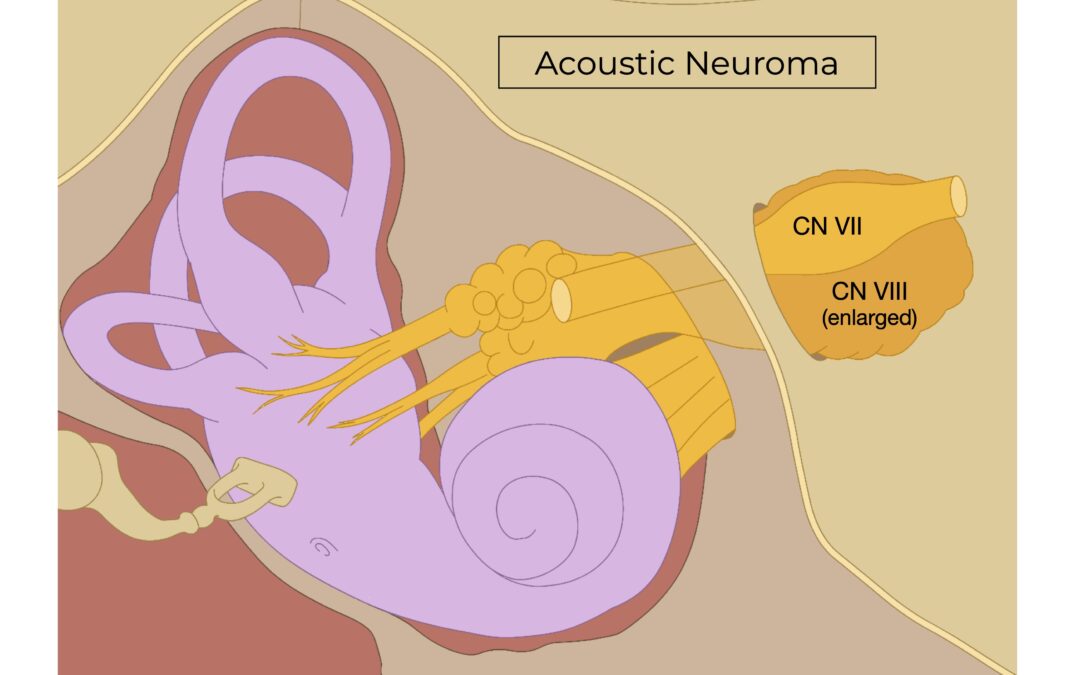As a healthcare provider, seeing patients with various medical conditions is part and parcel of our daily routine. However, there are certain conditions that are relatively rare, but require keen attention and understanding for effective management. One such condition is an acoustic neuroma, also known as vestibular schwannoma. In this blog, we will provide insights into what an acoustic neuroma is, how often it occurs, clinical presentation, and treatment principles.
Understanding Acoustic Neuroma:
Acoustic neuroma is typically a slow-growing tumor that arises from the Schwann cells of the vestibulocochlear nerve (the 8th cranial nerve). These tumours usually begin where the brain transitions into the peripheral nervous system. While they are often benign, they can slowly grow and compress surrounding structures including the cranial nerves, labyrinth, brainstem, and potentially the cerebellum.
Prevalence:
In the United States, acoustic neuromas are relatively rare, with an estimated incidence of 1 in 100,000 individuals. Annually, there are approximately 2500 to 3000 new cases diagnosed [source], making it a condition that healthcare providers may encounter periodically, but not frequently.
Acoustic Neuroma Signs & Symptoms:
Slow, progressive hearing loss affecting one ear is the most common symptom present at the time of diagnosis. It is also the symptom that generally leads to one seeking medical attention. Other symptoms can include:
Tinnitus – Especially unilateral
Dizziness, vertigo and/or disequilibrium
Headaches
Facial numbness if the nearby 7th cranial nerve is involved
On examination, findings include hearing loss along with signs of a unilateral vestibular loss. Depending on the size and location of the tumour there can be other cranial nerve, brainstem, and cerebellum findings.
MRI also helps confirm the diagnosis and rule out other causes to one’s symptoms.
Conservative Treatment Principles:
Given the slow-growing nature of acoustic neuromas and their potential to affect critical structures, non-surgical management is often the initial approach. Observation through regular imaging and monitoring of symptoms is typically recommended for small, asymptomatic tumors. For patients experiencing symptoms such as hearing loss or imbalance, vestibular rehabilitation and hearing aids may be beneficial in improving their quality of life.
Indications for Surgery:
The decision to proceed with surgery is often based on factors such as tumour size, rate of growth, and if the tumour poses a threat to vital neurological structures.
Note: regardless of the treatment performed, hearing typically remains impaired.
Conclusion:
If you have experienced one sided hearing loss make sure to have it assessed by an audiologist, family physician, or otolaryngologist.
With any dizzy or balance related issues give us a call at North 49 or book a Vestibular Assessment online through our website. One of our vestibular physical therapists can work with you and your coworkers to determine the cause of your symptoms and how to best manage them.

